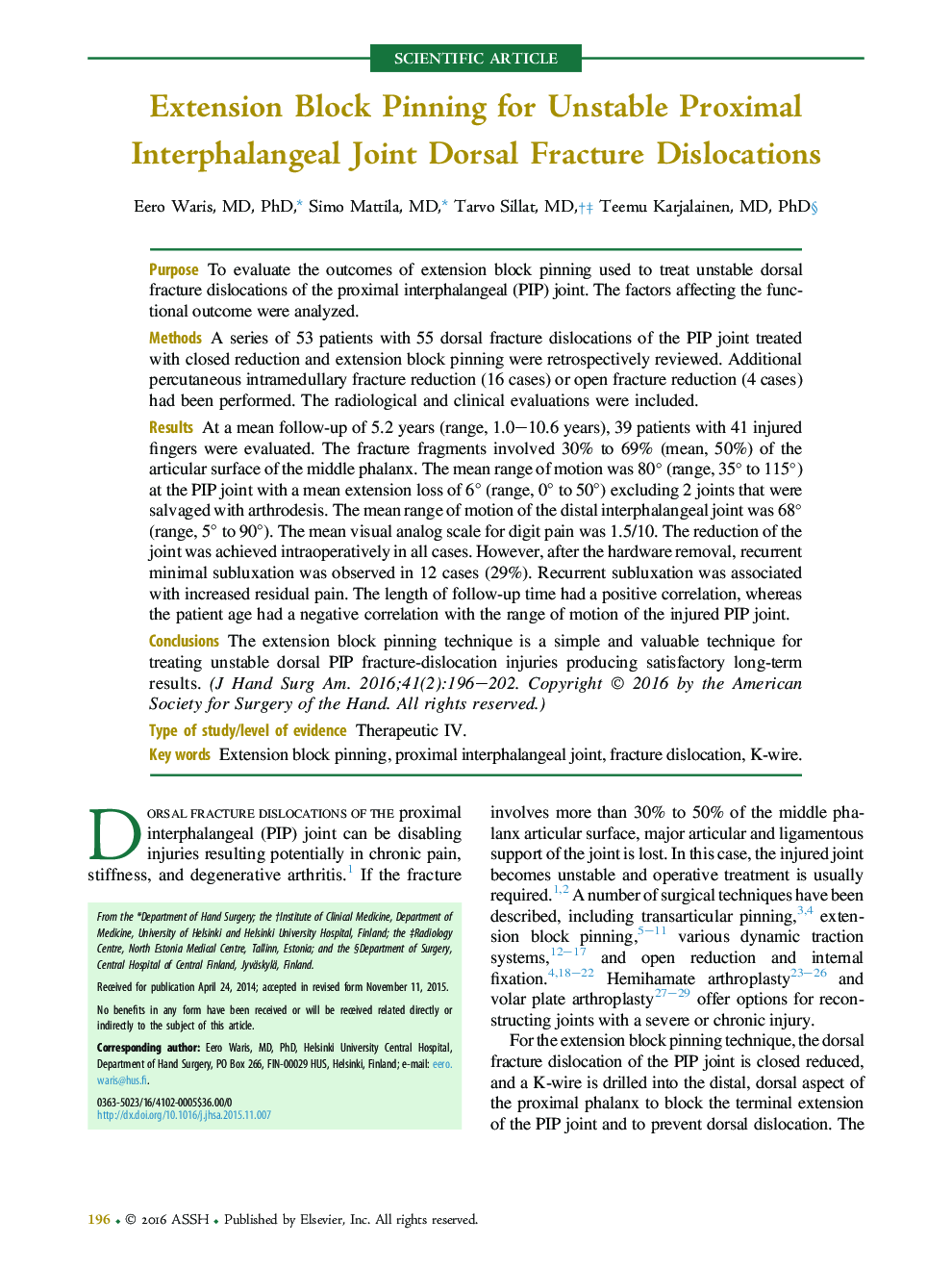| Article ID | Journal | Published Year | Pages | File Type |
|---|---|---|---|---|
| 4065843 | The Journal of Hand Surgery | 2016 | 7 Pages |
PurposeTo evaluate the outcomes of extension block pinning used to treat unstable dorsal fracture dislocations of the proximal interphalangeal (PIP) joint. The factors affecting the functional outcome were analyzed.MethodsA series of 53 patients with 55 dorsal fracture dislocations of the PIP joint treated with closed reduction and extension block pinning were retrospectively reviewed. Additional percutaneous intramedullary fracture reduction (16 cases) or open fracture reduction (4 cases) had been performed. The radiological and clinical evaluations were included.ResultsAt a mean follow-up of 5.2 years (range, 1.0–10.6 years), 39 patients with 41 injured fingers were evaluated. The fracture fragments involved 30% to 69% (mean, 50%) of the articular surface of the middle phalanx. The mean range of motion was 80° (range, 35° to 115°) at the PIP joint with a mean extension loss of 6° (range, 0° to 50°) excluding 2 joints that were salvaged with arthrodesis. The mean range of motion of the distal interphalangeal joint was 68° (range, 5° to 90°). The mean visual analog scale for digit pain was 1.5/10. The reduction of the joint was achieved intraoperatively in all cases. However, after the hardware removal, recurrent minimal subluxation was observed in 12 cases (29%). Recurrent subluxation was associated with increased residual pain. The length of follow-up time had a positive correlation, whereas the patient age had a negative correlation with the range of motion of the injured PIP joint.ConclusionsThe extension block pinning technique is a simple and valuable technique for treating unstable dorsal PIP fracture-dislocation injuries producing satisfactory long-term results.Type of study/level of evidenceTherapeutic IV.
